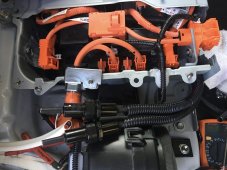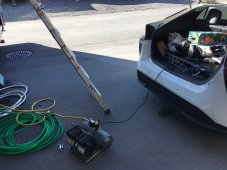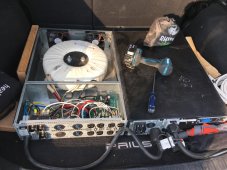Thank you @Will Prowse for the forum.
I have a 208V inverter from APC, SURT10000XLT. The DC input voltage is 192V, and have 2x APC SURT003 giving 120, 208, and 240 output from the inverter. I'm looking to build a battery pack and I see lots of options, so far I've settled on purchasing 16x (for now) of the Zooms/Chins battery packs. It seems the cell quality is good, they each come with a BMS, but I see the packs I linked as manufactured come with a 48V limit. Obviously this is a limitation of the BMS (true?), but for the price it seems good for the cells.
Really I'm just here for hardware suggestions.
This will never be grid tie, but it's pretty high voltage so I'd like some second-hand experience before I get more involved or do something uneducated.
I plan to run my well (1HP) and pool pump(0.5HP), the pool water will be lightly pressurized against the back of the PV panels using some soft PVC.
I also have a 208v-25amp multi-zone split system for A/C and some 1200-2400w 120v temp controlled in-line water heaters.
Could anyone offer some BMS recommendations (EV based?), PV charging approach, alternate cell recommendations?
Thanks in advance.
EDIT (minutes later):
I've found these 280AH 3.2V cells with studs from watching one of Will's videos. For 60S, can I set up 4 banks of 48V with some high-amperage BMS and be "okay"? It seems the max current would be ~75A, but what limits the circuit voltage with these batteries?
I have a 208V inverter from APC, SURT10000XLT. The DC input voltage is 192V, and have 2x APC SURT003 giving 120, 208, and 240 output from the inverter. I'm looking to build a battery pack and I see lots of options,
Really I'm just here for hardware suggestions.
This will never be grid tie, but it's pretty high voltage so I'd like some second-hand experience before I get more involved or do something uneducated.
I plan to run my well (1HP) and pool pump(0.5HP), the pool water will be lightly pressurized against the back of the PV panels using some soft PVC.
I also have a 208v-25amp multi-zone split system for A/C and some 1200-2400w 120v temp controlled in-line water heaters.
Could anyone offer some BMS recommendations (EV based?), PV charging approach, alternate cell recommendations?
Thanks in advance.
EDIT (minutes later):
I've found these 280AH 3.2V cells with studs from watching one of Will's videos. For 60S, can I set up 4 banks of 48V with some high-amperage BMS and be "okay"? It seems the max current would be ~75A, but what limits the circuit voltage with these batteries?
Last edited:






